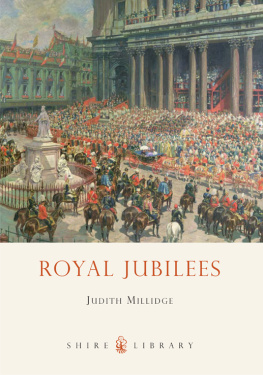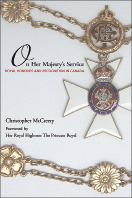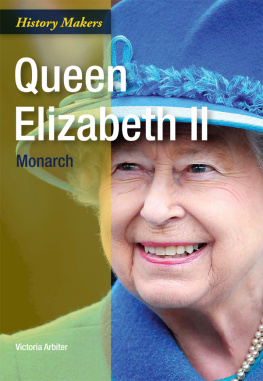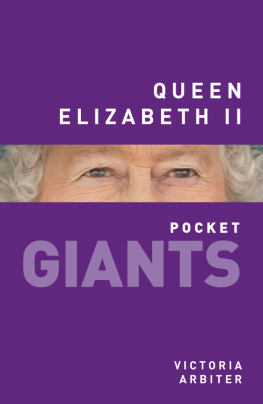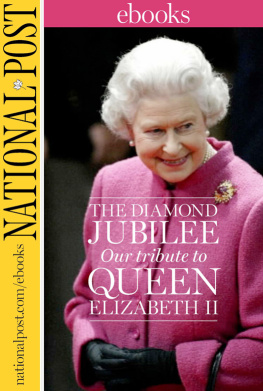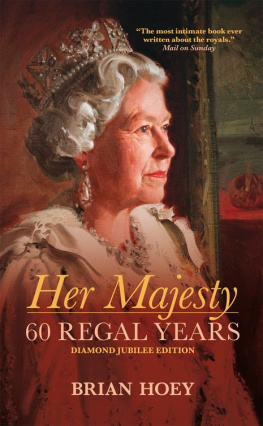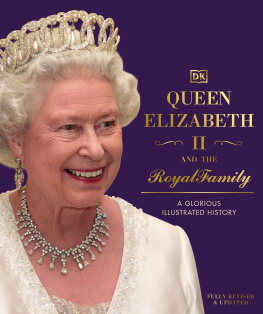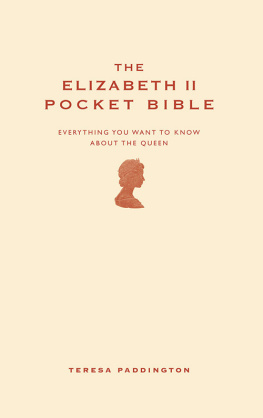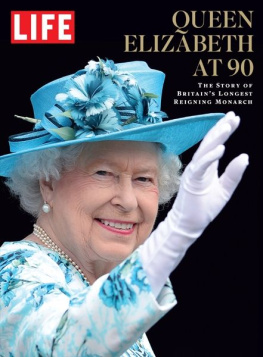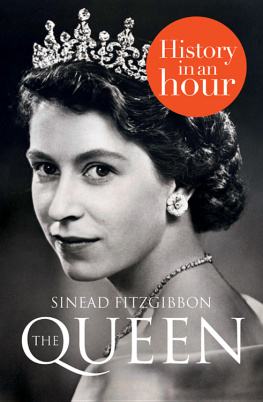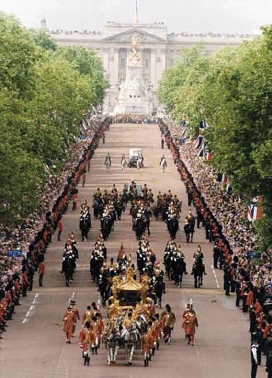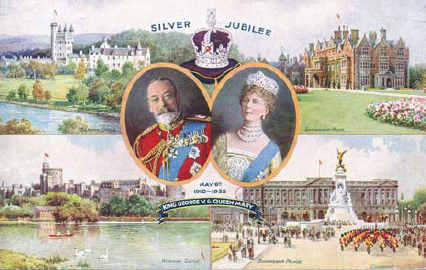ROYAL JUBILEES
Judith Millidge
SHIRE PUBLICATIONS
The gold state coach in the Mall taking the Queen and the Duke of Edinburgh to the Service of Thanksgiving at St Pauls Cathedral to celebrate Elizabeth IIs Golden Jubilee, 2002.
CONTENTS
A commemorative postcard published in 1935, showing the kings principal residences.
Queen Elizabeth II on walkabout in Aylesbury, Buckinghamshire, 2002. The Queen visited seventy cities and towns across Britain between May and August 2002.
INTRODUCTION
M ONARCHIES are a rare breed. In the last century more hereditary rulers lost their crowns than survived long enough to celebrate dozens of years of glorious rule upon the throne; nevertheless, a number of royal jubilees were celebrated around the world, from the diamond jubilee of the venerable Austro-Hungarian Emperor Franz Joseph in 1908, to the sixtieth anniversary of His Majesty King Bhumibol Adulyadej of Thailand in 2006. The British, who pride themselves on the quality of their ceremonial pageantry, have celebrated the jubilees of the kings and queens of Great Britain since 1809, the year of George IIIs fiftieth anniversary, when the whole country was invited to join in a day of national rejoicing.
Over the last thousand years, fourteen British monarchs have achieved at least twenty-five years on the throne: Ethelred the Unready, Henry I, Henry II, Henry III, Edward I, Edward III, Henry VI, Henry VIII, Elizabeth I, George II, George III, Victoria, George V, and Elizabeth II. Henry III, Edward III and George III survived fifty years, as did James VI and I, as King of Scotland, and of course Victoria and Elizabeth II have reached sixty years on the throne.
The word jubilee is defined by the Oxford English Dictionary firstly as a special anniversary of an event, especially one celebrating twenty-five or fifty years of a reign or activity, and secondly as a period of remission from the penal consequences of sin, granted by the Roman Catholic Church under certain conditions for a year, usually at intervals of twenty-five years. Secular jubilees owe their origins to sacred jubilees, as described in the Book of Leviticus. The word itself is derived from Hebrew yobel, meaning rams horn trumpet, the instrument which was used to proclaim a jubilee year. The idea of a special year of remission of sins and universal pardon was known throughout medieval times, but the first documented religious jubilee was instituted in 1300 by Pope Boniface VIII, who promised the broadest forgiveness of sins to those who visited St Peters in Rome during that year. This first religious jubilee was immensely popular and the ritual continues today.
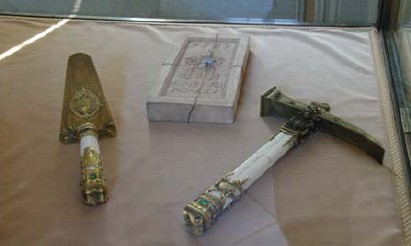
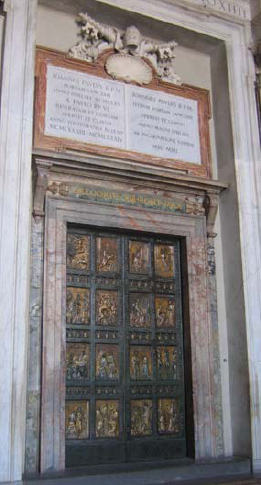
The Porta Sancta in St Peters Basilica, Rome, is opened only once every twenty-five years, in a holy jubilee year. The Pope uses the silver hammer to crack open the brick wall and open the door to pilgrims.
Secular jubilees celebrating a monarchs reign are dependent on regnal life spans and are therefore irregular occurrences, but in the nineteenth century in Britain they absorbed the religious traditions of remitting sins and freeing prisoners. Incidentally, it was not until the late nineteenth century that jubilees were accorded the same epithets as wedding anniversaries: silver for twenty-five years, gold for fifty and diamond for sixty.
Henry III was the first English monarch to achieve fifty years on the throne, but his reign was by no means easy or especially peaceful. He inherited the throne at the age of nine in 1216, just a year after his father (King John) had signed the Magna Carta, the first great charter of rights that paved the way for modern democratic government. Henry proved to be a strong and pious king, who was especially devoted the to the cult of St Edward the Confessor. By 1266, the fiftieth anniversary of his accession, Henry had only just emerged from the bitter struggle of the Second Barons War, in which he had ultimately triumphed at the battle of Evesham. It was indeed a year of royal celebration, but it was also one in which vicious retribution was carried out on the enemies of the king. The Dictum of Kenilworth, which was issued almost fifty years to the day from Henrys accession, was a pragmatic document that allowed the surviving rebels to buy back their forfeited lands and confirmed the legitimacy of the Magna Carta, but it also left no one in any doubt that royal authority rested on the king alone.
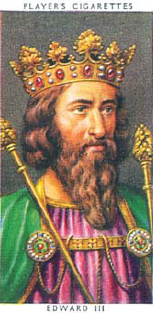

These portraits of Henry III and Edward III, two of Britains longest-reigning monarchs, are part of a set of cigarette cards, issued by John Player & Son for George Vs Silver Jubilee in 1935.
Just over one hundred years later, in 1377, Edward III achieved the equivalent of his golden jubilee. The founder of the Order of the Garter, and king at a time when the chivalric ideal was at its strongest, Edward was in many ways responsible for the origins of the pageantry still associated with great royal occasions. He was the father of nine children, and the concept of a royal family became a strong one. Edward ensured that his five sons were given responsibilities, lands and titles, and as a consequence none ever rebelled against him. His wars with France meant that the noblemen of England were occupied with matters abroad, and so had less time to challenge royal power at home. Despite war and the ravages of the Black Death, in 1377, after forty years of domestic peace, there was much to celebrate, and when Edward died in June of that year (just five months short of the actual anniversary of accession), there were, according to the chronicler Jean Froissart, great sorrows made in England, as the kings body was transported through London from the royal palace at Sheen to Westminster in an open coffin.
National celebrations of royal coronations, births, deaths and marriages were difficult in the days before good mass communication by the end of the eighteenth century news travelled more quickly across Britain thanks to the improvement in road construction, so an event in London could be public knowledge in York, for example, just thirty-six hours later (earlier in the century the same journey would have taken four days). Moreover, increased literacy among the population meant that in the urban centres at any rate, newspapers and pamphlets were read and discussed in coffee houses and their news disseminated to a wide audience.
The first national royal jubilee was celebrated in 1809 and at first glance it seems an unlikely event: George III had suffered bouts of unpopularity, madness and bad luck, losing the American colonies and fathering a brood of dissipated children, only one of whom produced a legitimate heir by the time of the National Jubilee. Subsequent royal jubilees, notably those celebrated in 1935 and 1977, were planned slightly tentatively during periods of economic hardship and national apathy, but just as in 1809, the celebrations and demonstrations of patriotic fervour proved to be highly memorable.

